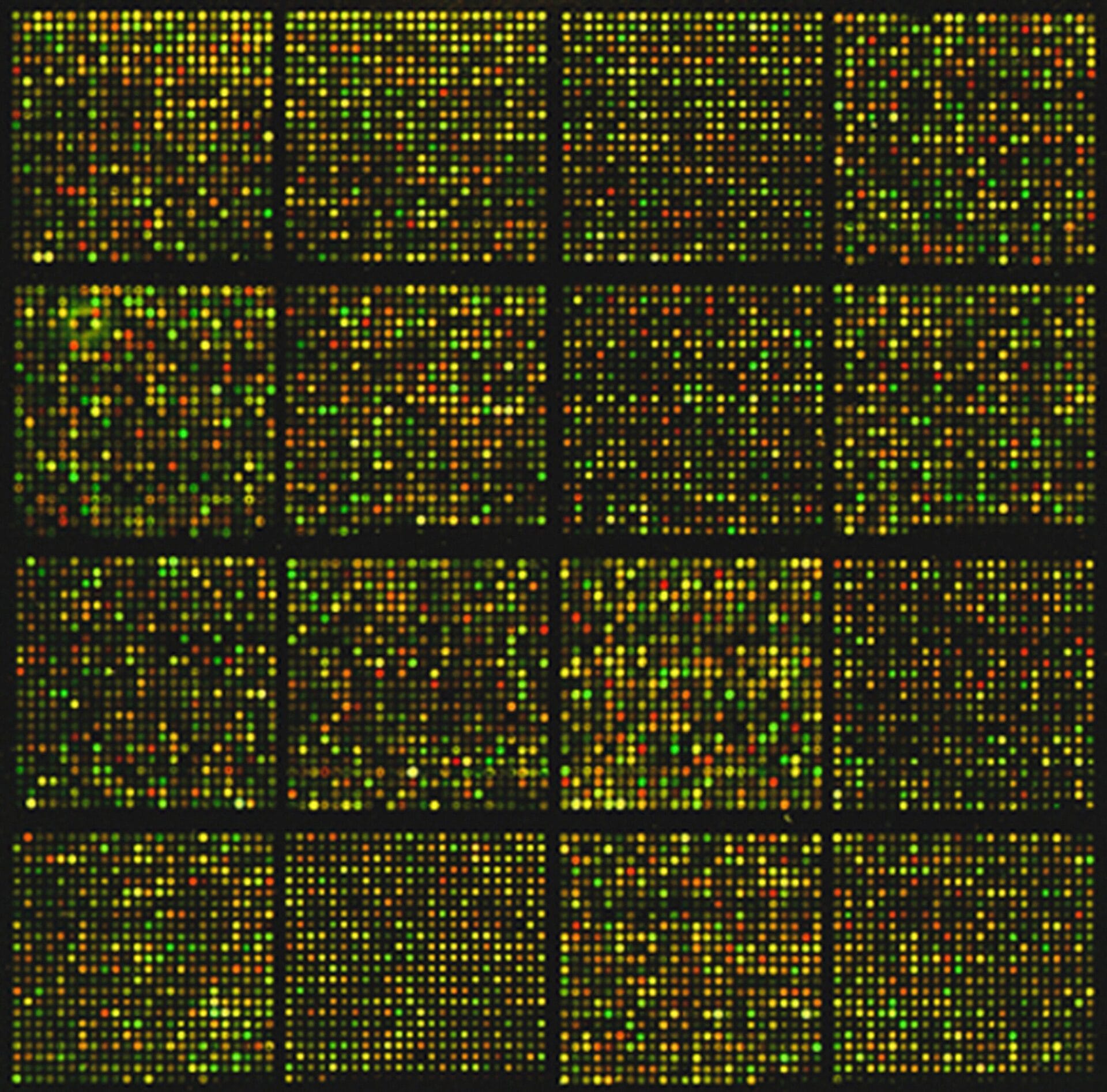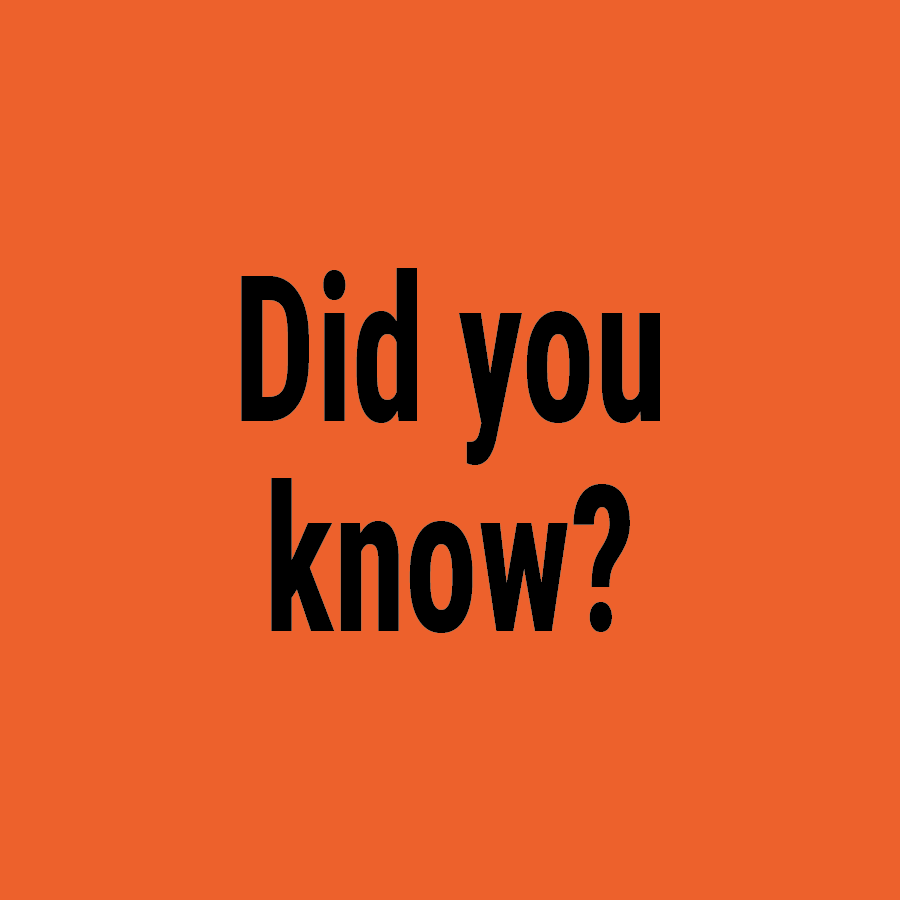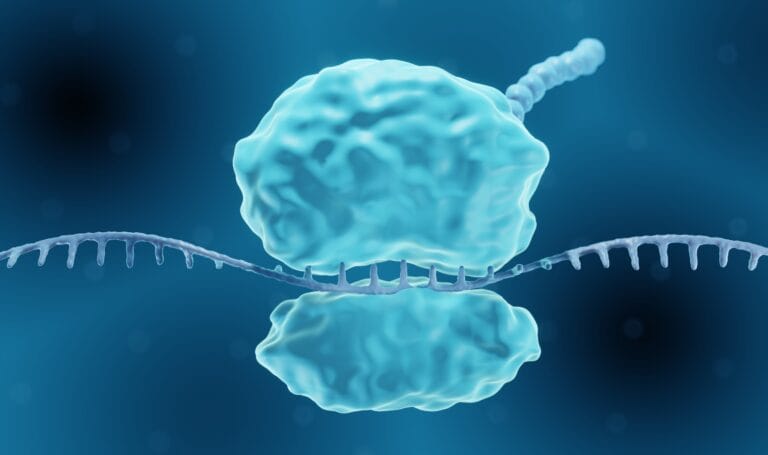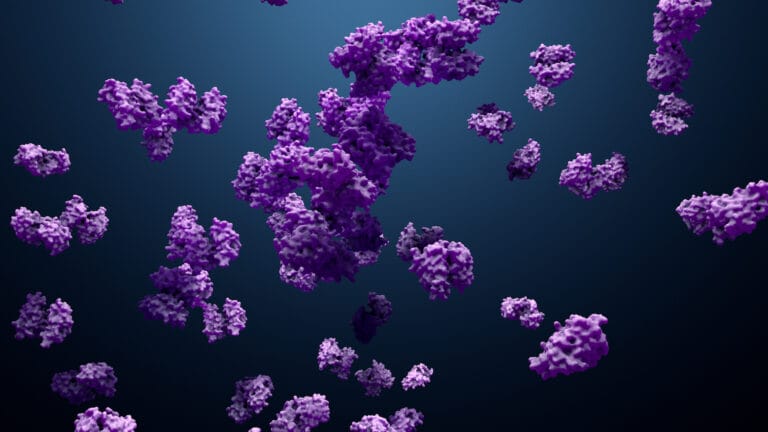What is gene expression?

Gene expression is the process our cells use to convert the instructions in our DNA into a functional product, such as a protein.
- Our DNA stores the information our cells need to function. It is organised into small sections, called genes, which contain instructions for making a specific product, usually a protein.
- Proteins carry out most of the active functions of a cell, such as protecting against disease or absorbing nutrients from food.
- The conversion of genes into their functional products is called gene expression. It’s a tightly regulated process that enables a cell to respond to its changing environment by making more or less of a specific protein.
The steps of gene expression
There are two key steps involved in making a protein: transcription and translation.
Transcription
- The first step of gene expression is called transcription. During transcription, the DNA of a gene is transcribed to produce an RNA transcript, called messenger RNA (mRNA).
- RNA is chemically similar to DNA, but only has a single strand of bases, rather than two. And while DNA has the base thymine (T), RNA has a base called uracil (U).
- Transcription takes place inside the nucleus, by an enzyme called RNA polymerase. Once the gene has been transcribed, the mRNA leaves the nucleus and delivers the message to the ribosomes – the cell’s protein factories.

An illustration showing the process of transcription - where the DNA of a gene is transcribed into messenger RNA (mRNA).
Image credit: Laura Olivares Boldú / Wellcome Connecting Science
Translation
- The second step of gene expression is called translation. During translation, the mRNA is converted into a string of amino acids – the basic building blocks of a protein.
- When the mRNA reaches the ribosomes, it is read by a carrier molecule, called transfer RNA (tRNA).
- The tRNA reads the mRNA in chunks of three bases, known as a codon, which encodes one amino acid. For example, the codon ‘GGU’ codes for the amino acid glycine.
- The tRNA temporarily binds to the mRNA codon and delivers the corresponding amino acid to the ribosome.
- The ribosome binds the amino acids together, producing a long chain called a polypeptide.
- This process continues until the ribosome reaches a ‘stop’ codon - a group of three bases that signal the end of the protein.

An illustration showing the process of translation - where the mRNA is translated into amino acids, creating a protein.
Image credit: Laura Olivares Boldú / Wellcome Connecting Science



